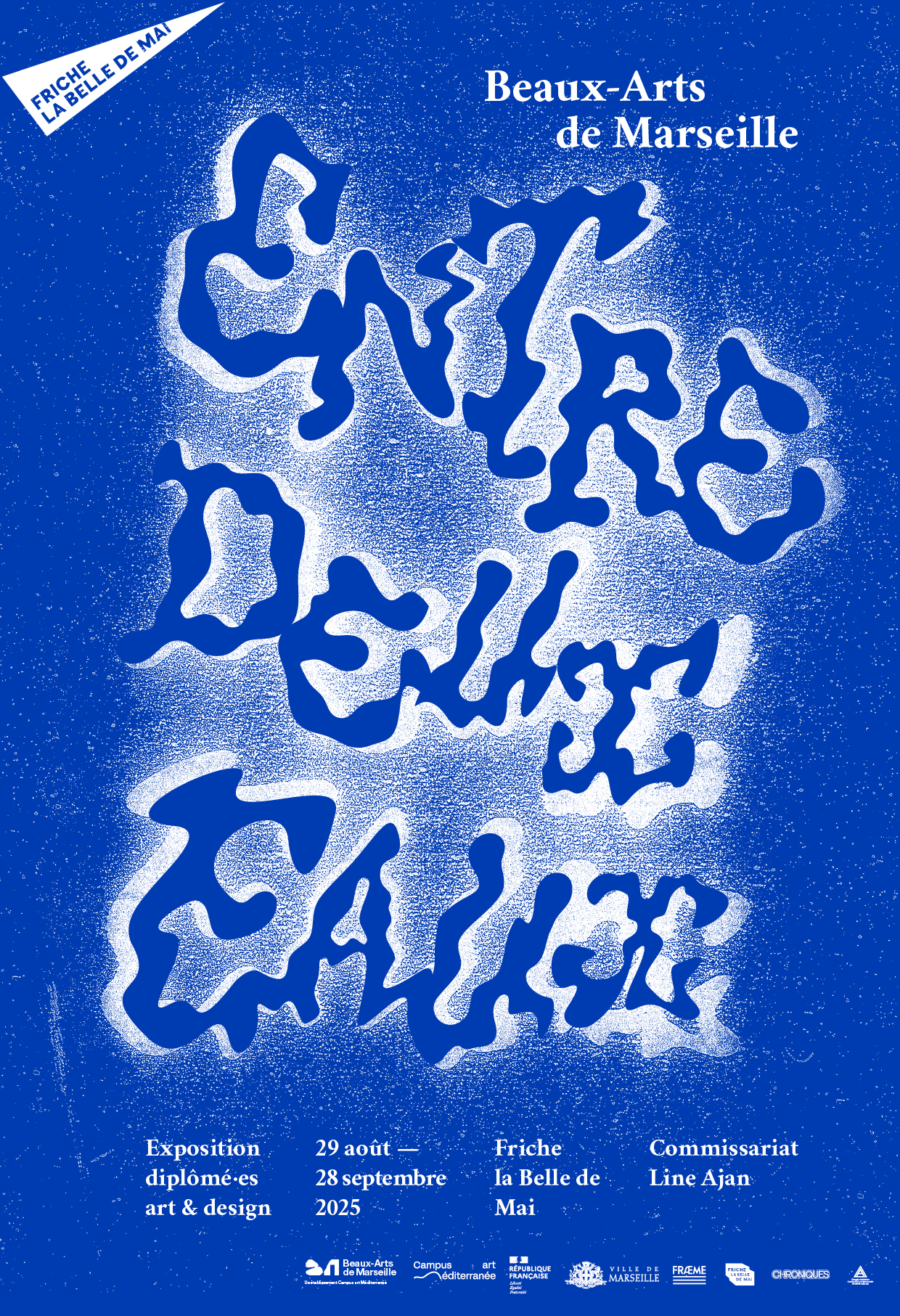Beaux Art de Marseille, Campus Art Méditerranée
Entre Deux Eaux
Exhibition of art and design graduates
Curation : Line Ajan
From August 29 to September 28, 2025
For the fourth consecutive year, the Marseille School of Fine Arts is presenting the work of its DNSEP graduates in art and design in an exhibition punctuated by moments of mediation and conceived as a collective work. This event marks the end of the future graduates’ studies and offers them a starting point as they leave school.
Entitled Entre deux eaux, the exhibition by graduates of the Marseille School of Fine Arts draws inspiration from both the local context of Marseille —a city bordered by the Mediterranean Sea to the south and west— and the unsettling feeling of floating between two realities that accompanies the transitional moment of leaving art and design school.
The exhibition is based primarily on the predominance of ecological, territorial, and sociopolitical issues in the practices of 39 art and design students in 2025. A global context of instability underlies the exhibition, while we glimpse an unsettled landscape where “slow violence” [1] is unfolding: discriminatory policies, the environmental consequences of colonization, imperialist wars, neoliberal policies, and other forms of extractivism. A priori invisible and dispersed in time and space, this violence, previously slow and muted, has become increasingly loud in recent years: police violence in France and the wars against Palestine, Lebanon, and Congo are some of the historical events that surrounded the production of these works— and which are sometimes mentioned in them.
Mostly created between 2023 and 2025, some of the works stem from concerns about this context, as well as more specific fears related to the “post-school void” [2]. This Entre deux eaux echoes the ambivalent conditions of recent art school graduates: promising prospects, but an often precarious economic reality. Leaving art school to enter a world marked by a constellation of interconnected crises—environmental, economic, and sociopolitical—raises both material and existential questions. In this unstable world, ready to tip over at any moment, some students choose to play on this feeling of limbo, which is characteristic of various transitional phases—from adolescence to graduation from art and design school.
Other practices focus on what connects the in-between, or how water acts as a vector. They focus on the transmission of diasporic histories, family and cultural memories, and intergenerational struggles. While these works take intimate experiences as their starting point, they nevertheless resonate with shared realities and futures to be re-enchanted. In this way, these young practices resemble “the sea [which], like a scandal of blue, a crash of desire, accentuates the world” [3] that surrounds us.
[1] Rob Nixon, Slow Violence and the Environmentalism of the Poor, Harvard University Press, 2013
[2] Olivier Bertrand, Clémence Fontaine, Chloé Horta (Eds.), Comment survivre après l’école d’art ?, surface utiles/ l’erg, 2020
[3] Karim Kattan, « C’est quand la lumière entre [Knossos] », Hortus Conclusus, L’extrême contemporain, 2025, p. 39
Informations
Friche la Belle de Mai, 41 rue Jobin, 13003 Marseille



